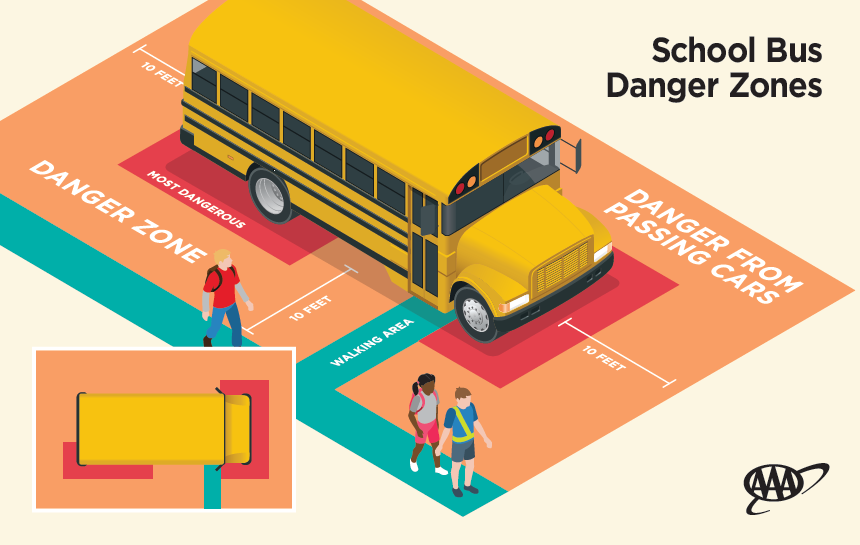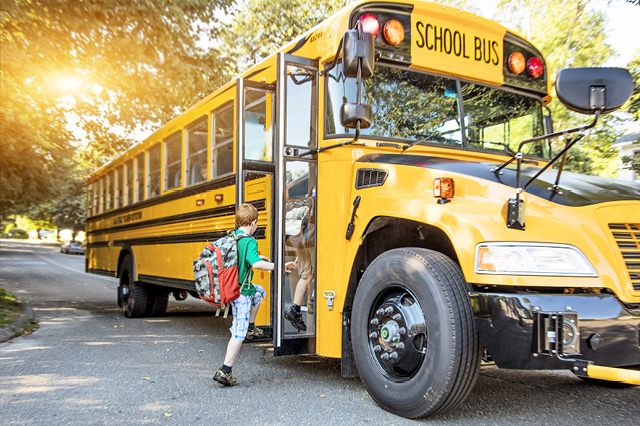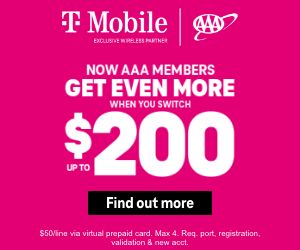The yellow school bus is emblematic of the American public school systems, but everyone plays a part in maintaining kids’ safety from bus stop to drop off. With over 1,000 fatal school transportation-related crashes each year, it’s imperative for both parents and fellow drivers to understand the specific rules, regulations and facts about school buses to ensure every child arrives to school and back home safe.
Here, we’ve explained some of the most common questions regarding school buses, from why they’re yellow to when it’s OK to pass and when it’s definitely not.
When do you have to stop for a school bus?
One of the most critical aspects of school bus safety is understanding when to stop. If driving behind or approaching a school bus with flashing red lights, you must come to a complete stop. In most states, this includes stopping on both sides of a divided roadway unless there is a physical barrier or median separating the lanes. New York law requires drivers to stop for a school bus on a divided highway even if there is a barrier. Failing to stop for a school bus can result in hefty fines and, more importantly, poses a severe risk to students’ safety.

Can you pass a school bus with flashing yellow lights?
Flashing yellow lights on a school bus indicate that it’s preparing to stop. In most cases, you are not required to stop when you see these yellow lights, but you should exercise caution. Slow down and prepare to stop as the transition from yellow to red lights signals the loading or unloading of students.
Is it illegal to pass a school bus?
Passing a school bus when its red lights are flashing and the stop sign is extended is illegal in every state. This law is in place to protect the safety of students getting on or off the bus, and penalties for disregarding can be severe, including fines and even license suspension.
Why don’t school buses have seat belts?
School buses are designed with a safety concept called compartmentalization which uses high, padded seatbacks and closely spaced seats to protect passengers in the event of a collision. By creating a protective cocoon-like structure, the unique design is effective in minimizing injuries and is why seat belts are commonly not found on school buses.
Why do school buses stop at railroad tracks?
After a 1938 crash in Utah that killed 25 children and the driver, national laws were put in place to prevent such a tragedy from ever happening again. Now, bus drivers are required to open the bus door, look around and listen intently for approaching trains to make sure there is no imminent danger before proceeding. This practice ensures that students and the bus itself are not in harm’s way when crossing railroad tracks, reducing the risk of accidents.
Why are school buses yellow?
The iconic yellow color of school buses unsurprisingly serves a practical purpose – visibility. Yellow is a highly visible color that stands out in various weather conditions and lighting, making it easier for other drivers to spot school buses from a distance. This enhanced visibility plays a significant role in preventing accidents and making sure students are as safe as possible.
Did you know these school bus safety facts? What are other tips for maintaining school bus safety? Let us know in the comments.
2 Thoughts on “When to Stop for a School Bus and More School Bus Safety Questions”
Leave A Comment
Comments are subject to moderation and may or may not be published at the editor’s discretion. Only comments that are relevant to the article and add value to the Your AAA community will be considered. Comments may be edited for clarity and length.

















If the road is a four lane one ( two each way ) and there is a island divider in the middle ( or not ) and a school bus is stopped in the opposite direction with the red lights on, are the drivers in the opposite direction legally forced to stop ?
Hi Tom, great question! The laws vary by state, but most require drivers to stop on both sides of a divided roadway unless there is a physical barrier or median separating the lanes. In New York, drivers must stop even if there is a barrier. I hope that helps!